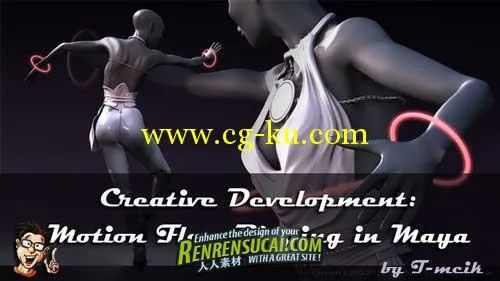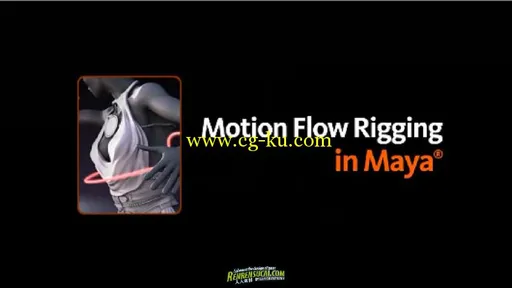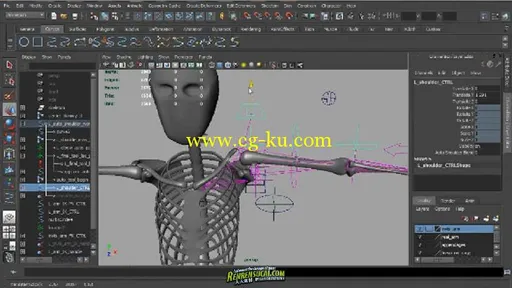本教程是由Digital-Tutors机构最新出品的Maya2011人体运动绑定训练教程。
Maya 是目前世界上最为优秀的三维动画的制作软件之一,主要是为了影视应用而研发的,所以在出世后不久就在《精灵鼠小弟》、《恐龙》等这些大片中一展身手。除了影视方面的应用外Maya在三维动画制作,影视广告设计,多媒体制作甚至游戏制作领域都有很出色的表现。初识Maya 是目前世界上最为优秀的三维动画的制作软件之一,它是Alias|Wavefront公司在1998年才推出的三维制作软件。虽然相对于其他老牌三维制作软件来说Maya还是一个新生儿,但Maya凭借其强大的功能,友好的用户界面和丰富的视觉效果,一经推出就引起了动画和影视界的广泛关注,成为顶级的三维动画制作软件。
Digital-Tutors:Creative Development: Motion Flow Rigging in Maya with Farley_Chery 7 hrs. 8 min. |Released on June 15, 2011 |Project Files Included (13 MB) Required Software: Maya 2011
In this series of lessons, learn the process of rigging with an emphasis on fluidity and natural motion.
In this course, Farley Chery will be introducing extraordinary new rigging concepts to help animators achieve natural fluidity in our body movement. He will cover different theories and methods used in combination to give natural articulation that occurs during body movement. The artist will explain the theory and reasoning through the rig development process. This leads into the creation of an innovative shoulder setup, based on the postion of the elbows mimicking the proper actions of human anatomy, which uses the concepts covered to make it intuitive to use in both FK and IK systems. This implementation of a remarkable no flip knee setup, which is used to create an automatic hip system, magically orients itself to the average position of the knees allowing for quick and natural poses for the character. This course is concluded by building a squash and stretch nSpine and an easy method for creating spine twists. These revolutionary methods come directly from the artist and can not be found anywhere else.
34 videos in this course
1. Introduction to the course
2. Introduction to the model and the end results
3. Theory section: programming nodes
4. Theory section: faux constraints
5. Theory section: interdependent systems
6. Creating the broken dependency loop for the auto shoulder
7. The dependency system
8. Finishing the automatic setup
9. Adding in the IK handles
10. Building the IK switches
11. Cleaning up the auto clavicle interface
12. Theory: Pose space tools
13. Pose space vs. Twist knee control
14. Building the legs
15. Fixing the reversed controls for the legs
16. Cleaning up the leg interface for export
17. Importing and setting up our invisible legs
18. Setting up the auto swivel on the hips
19. Continuing with the auto swivel functionality
20. Adding the other two axis to our automatic setup
21. Creating a better solution to measure distance
22. Dual constraints, exploring and resolving the issues
23. Cleaning up the system and creating a hierarchy
24. The auto hip switch
25. Re-exploring the wheel and swivel: a better solution
26. Starting the nSpine 8 min.
27. Adding stretchy functionality to the nSpine
28. Completing the last steps to adding in stretchiness
29. A new method to add rotation to a spine
30. Uniting the leg system and the spine
31. Wrapping up the legs and spine, looking at limitations and issues
32. Finalizing the rig 10 min. 35 sec. Details »
33. Bonus lesson: tying the theoretical rig into a model
34. Bonus lesson: a quick explanation of the head controls
【



发布日期: 2011-8-10